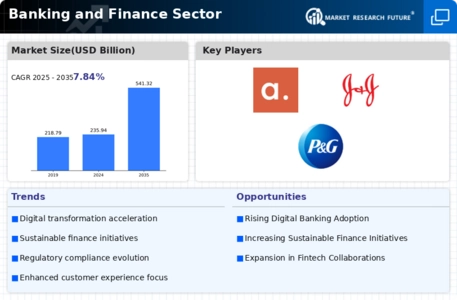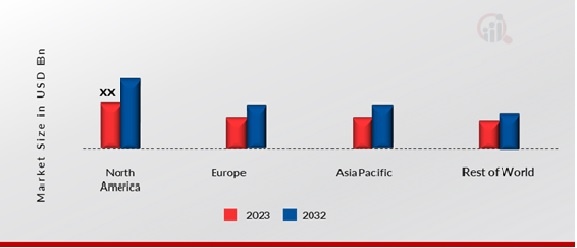Integration of fintech services is driving the market growth.
The market CAGR for the banking and finance industry has experienced a significant transition towards digitalization as conventional financial institutions progressively adopt technology to improve their operations and maintain a competitive edge. The integration of fintech solutions, which provide cutting-edge products and services, including robo-advisors and mobile payment platforms, contributes to the acceleration of this trend. An important facet of this phenomenon is the rapid expansion of digital banking.
Based on data from Statista, it is anticipated that the global user base of digital banking will attain 3.6 billion by 2024, indicating a consistent upward trend in comparison to preceding years. The increased prevalence of digital banking can be ascribed to a multitude of factors, encompassing the ease of accessing financial services around the clock, reduced transaction fees in comparison to conventional banks, and the widespread availability of smartphones and internet connectivity.
Integration of fintech is an additional significant factor reshaping the market landscape. Fintech firms are causing significant disruption to conventional banking models through the provision of inventive solutions that capitalize on state-of-the-art technologies, including blockchain, big data analytics, and artificial intelligence. As an illustration, the lending industry has been significantly transformed by peer-to-peer lending platforms such as LendingClub and Prosper, which connect borrowers and investors directly, thereby eliminating the necessity for conventional banks.
In addition, there is a growing trend of collaborations between financial institutions and fintech firms, known as partnerships, in which institutions attempt to capitalize on the dynamism and innovation of startups while preserving their existing clientele and adherence to regulations. An instance of collaboration between JPMorgan Chase and the fintech company OnDeck to streamline the small business lending process exemplifies how the two companies can work together to propel industry development and innovation.
A greater consciousness among investors, regulators, and consumers regarding environmental, social, and governance (ESG) concerns has prompted the banking and finance industry to place a greater emphasis on sustainable finance in recent years. A variety of practices designed to incorporate ESG considerations into investment decision-making and advance sustainable development objectives are included in sustainable finance. Moreover, an increasing number of policymakers and regulators are integrating environmental, social, and governance (ESG) factors into financial regulations and reporting obligations. This trend signifies a transition towards enhanced industry transparency and accountability.
For instance, the Sustainable Finance Disclosure Regulation (SFDR) of the European Union seeks to ensure comparability and consistency of sustainability-related information across financial products and to standardize ESG reporting. Thus, driving the Banking and Finance Sector market revenue.
Banking and Finance Sector Market Segment Insights
Banking and Finance Sector Services Insights
The global Telescopic Hydraulic cylinder market segmentation, based on services, includes lending and payments, insurance, reinsurance and insurance brokerage, investments, and foreign exchange services. At present, the "lending and payments" sector generally holds the most substantial market share due to the considerable need for solutions related to borrowing and payments.
On the contrary, the Compound Annual Growth Rate (CAGR) for the "Investments" segment is anticipated to be the most rapid, owing to the expanding financial literacy and heightened interest in wealth management, retirement planning, and investment prospects among institutions and individuals, which are propelled by economic expansion and progress.
Banking and Finance Sector End-Use Insights
The global Telescopic Hydraulic cylinder market segmentation, based on End Use, includes individuals, corporates, government, and investment institutions. At present, the "Corporates" sector generally holds the most substantial market share in the industry, owing to enterprises' extensive financial requirements, which encompass treasury management and financing.
On the contrary, the Compound Annual Growth Rate (CAGR) for the "Investment Institution" sector is anticipated to be the highest due to the fact that institutions are progressively exploring methods to safeguard and expand their wealth. This, in turn, will stimulate the demand.
Banking and Finance Sector Size of Business Insights
The global Telescopic Hydraulic cylinder market segmentation, based on the size of the business, includes small and medium businesses and large businesses. At present, the "large business" sector generally holds the most substantial portion of the market due to its substantial financial needs and wider economic influence.
On the contrary, it is anticipated that the Compound Annual Growth Rate (CAGR) of the "Small and Medium Business" sector will be the most rapid, owing to the fact that these establishments are progressively propelling economic expansion. This is further bolstered by efforts to facilitate financing access, technological advancements, and shifting market dynamics that favor businesses with agility.
Banking and Finance Sector Regional Insights















Leave a Comment